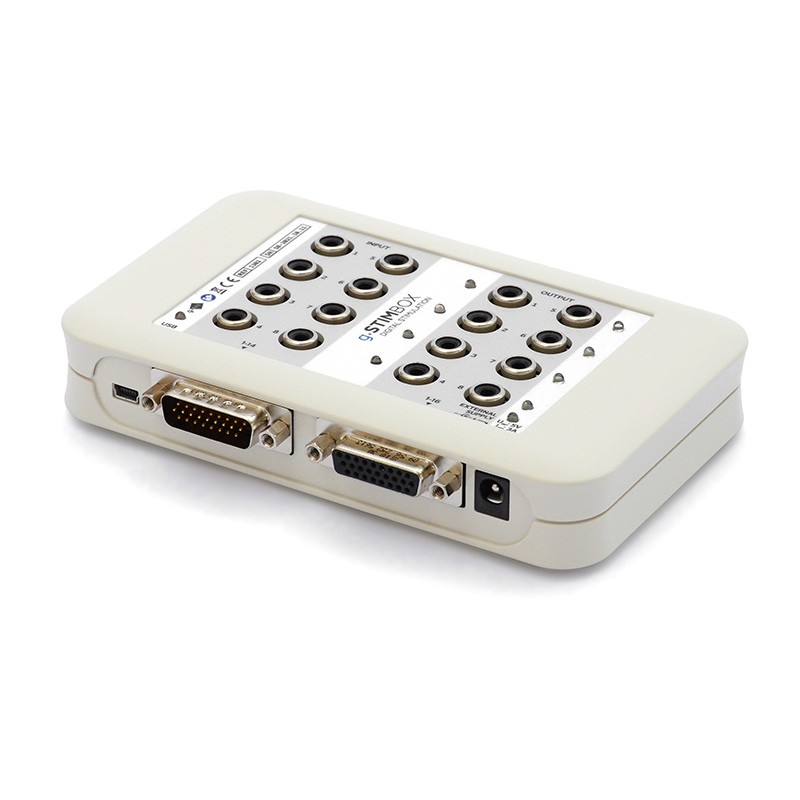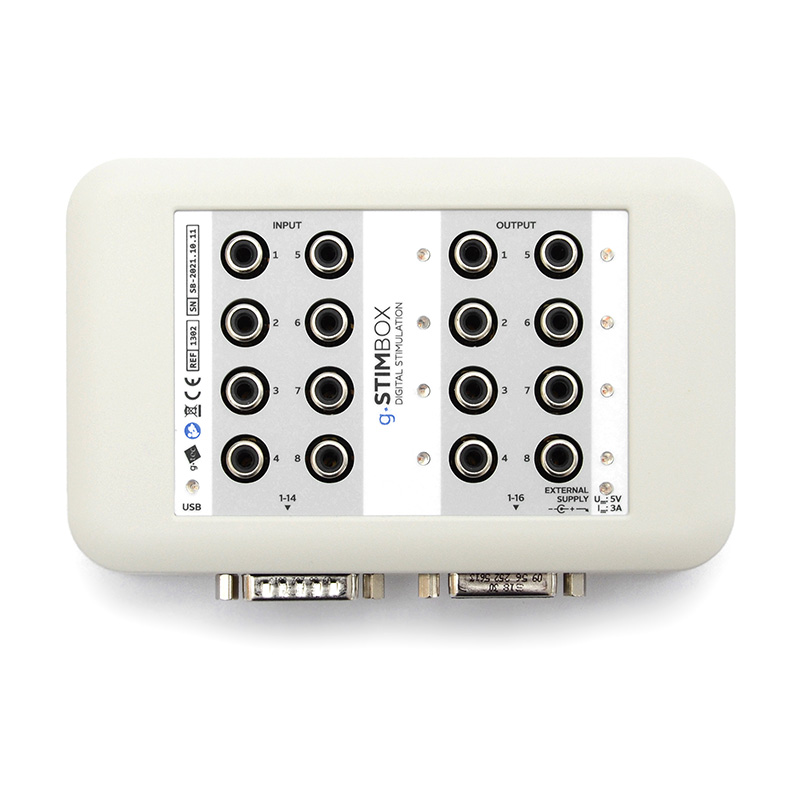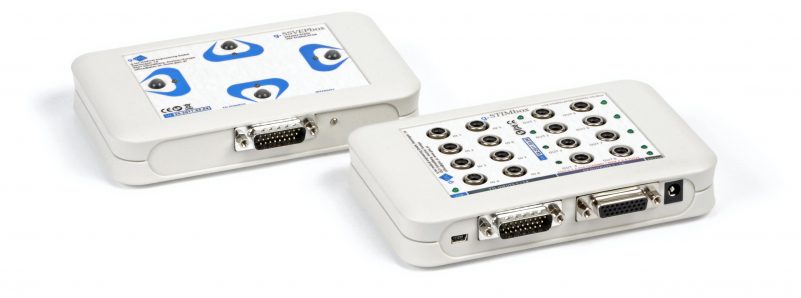
The g.STIMbox is used to generate and record trigger signals. You can easily program a wide variety of paradigms to meet your needs, and execute them with high temporal precision. At the same time, trigger signals from external devices can be recorded using the 14 digital inputs of the device. Therefore, the g.STIMbox is an ideal extension for electrophysiological research systems that require additional digital inputs and outputs.
The device provides versatile cinch connectors for 8 of the 16 outputs that can be used very conveniently, e.g. with LED’s for visual stimulation, to connect electrical or vibro-tactile stimulators or other devices triggered by 5V pulses. Compact devices like the g.SSVEPbox, which require several output/input channels, are connected using the SUB-D ports of the device.
The 14 digital inputs can be used to record signals from external devices. Here, as above, 8 of the 14 digital inputs are implemented as cinch connectors. The g.STIMbox is connected to the recording computer via USB, offers synchronous and asynchronous operation modes, and comes with a C-Application Programming Interface (API), a MATLAB-API and a Simulink-block.
Highly accurate stimulation frequencies can be defined and are calculated on the g.STIMbox (e.g. 10 Hz for SSVEP stimulation). This can help you implement highly precise SSVEP stimulation, as required for BCI experiments.
| µC controlled inputs and outputs for accurate timing |
| Digital outputs can produce precisely-timed paradigms |
| Digital inputs can be acquired and used within the recording system |
| Direct control of inputs/outputs from a computer via USB |
| 14 digital inputs (TTL) and 16 digital outputs (TTL) |
| Digital outputs usable for tactile or visual stimulation |
| C API, MATLAB API and Simulink drivers |
| Digital inputs | 14 |
| Digital outputs | 16 |
| Interface | USB |
| Power supply | USB or external power supply |
| Frequency range | 1-50 Hz for SSVEP stimulation |
ROBOTIC CONTROL WITH SSVEP
Define 4 different stimulation frequencies for the LEDs. We recommend avoiding the alpha region, because the alpha rhythm is often stronger than SSVEP signals in that frequency range. We also recommend choosing frequencies that are not multiples of each other (such as 8 and 16 Hz). For example, you might use 14, 16, 18 and 20 Hz for your four stimulation frequencies. Use g.HIsys to acquire the EEG data from electrodes placed over the visual cortex and to analyze the SSVEP signals. Then, calibrate the BCI system by instructing the person to look at each LED a couple times while focusing on that LED After the calibration, the 4 LEDs can be used to move the robot forward, backward, left or right. To design a visual evoked potential (VEP) experiment, just connect a strobelight or similar device to the digital output and connect one digital output to the biosignal amplifier to have an exact trigger between the EEG data and the flash. Then use g.HIsys to extract, visualize and store the VEPs.
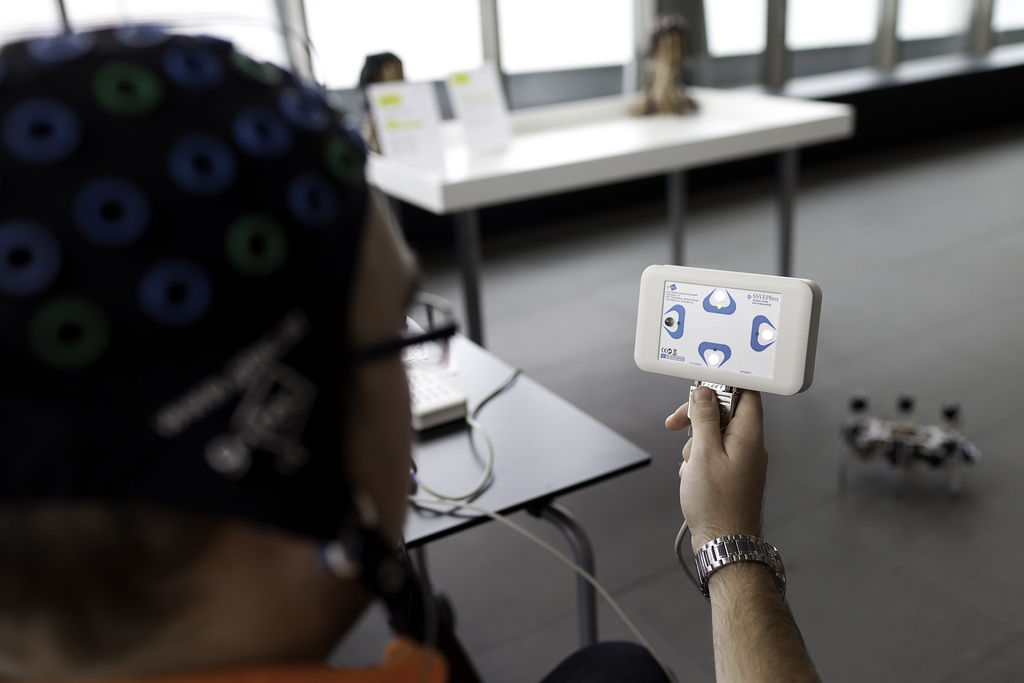
SSVEP STIMULATION
The g.SSVEPbox is a stimulation device for Steady-State Visual Evoked Potentials. It can be connected to the g.STIMbox digital outputs. Four ultra-bright, dimmable LEDs provide precise stimulation, and four smaller LEDs indicate which LED is the target LED. The flickering frequencies can be freely configured via software (e.g. with the g.STIMbox MATLAB API). If the g.SSVEPbox is used for BCI experiments, then a paradigm can be realized in Simulink that indicates the target LED in training mode. In real-time control mode, the user can choose the target LED and thus communicate freely. This setup allows many applications, such as moving a robotic device forward, backward, left and right.
VISUAL STIMULATION AND PUSHBUTTON
For the g.STIMbox, small input/output devices are available, which are connected to single cinch-connectors and provide basic functionality. The pushbuttons, which are connected to input channels, can be used for many purposes, such as conveying feedback from test subjects into the recording system. The single LED boxes, which are connected to output channels, can be used for visual stimulation.
VIBRO-TACTILE STIMULATION
g.VIBROstim is a compact vibro-tactile stimulator unit to be connected to the output of g.STIMbox. It can be attached to the body (e.g. upper/lower limbs, torso) with Velcro straps or adhesive tape. The intended use is to provide tactile stimulation to the skin for short term applications in research.
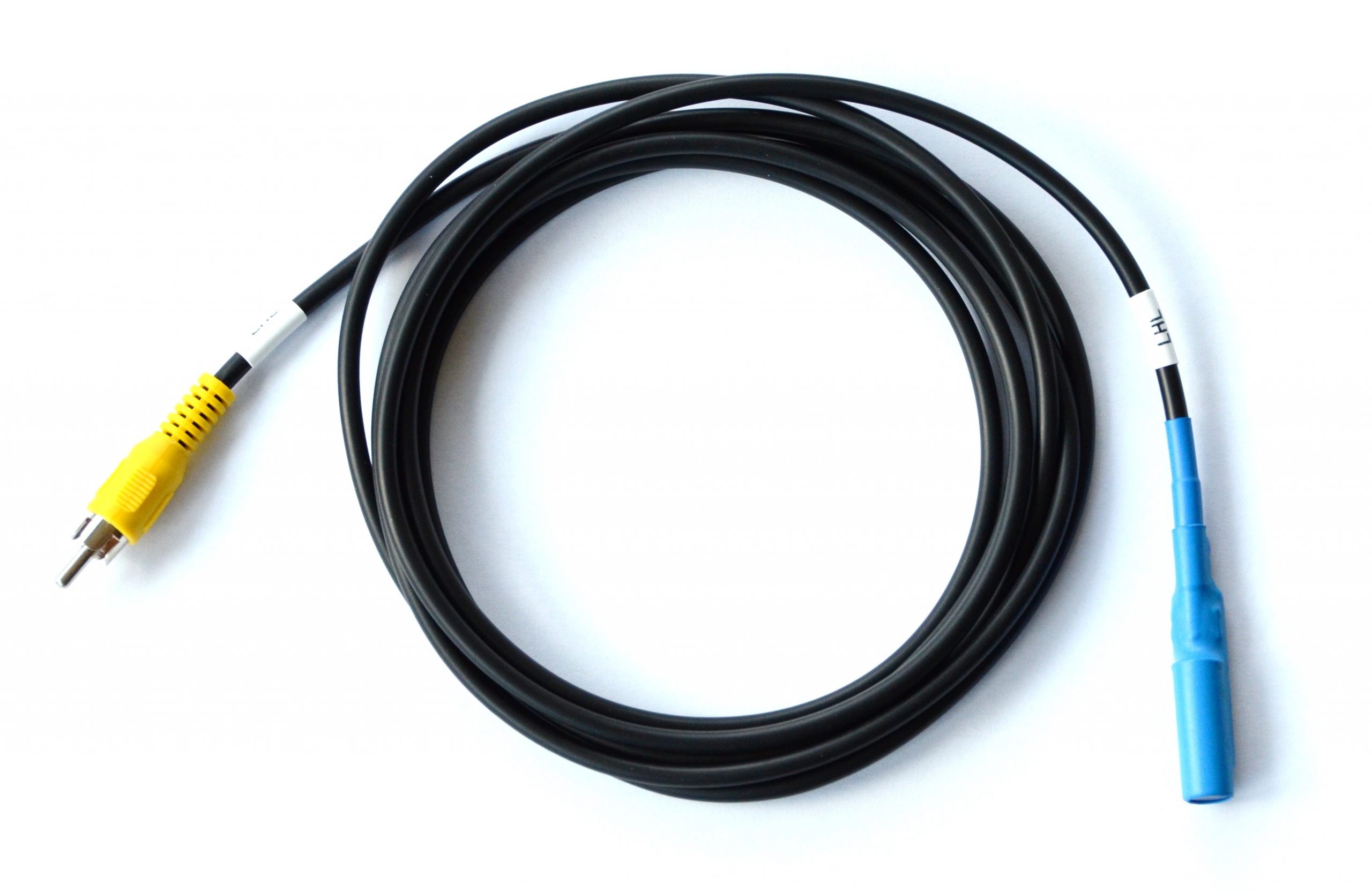
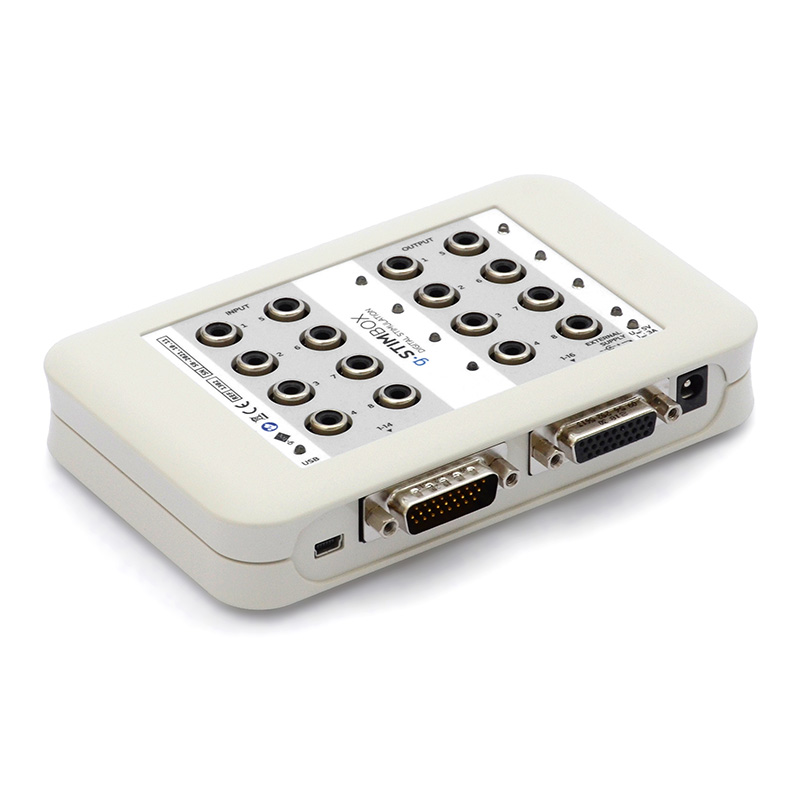
NEED MORE INFORMATION
ABOUT THIS PRODUCT?
Send us your email so we can contact you as soon as possible.
